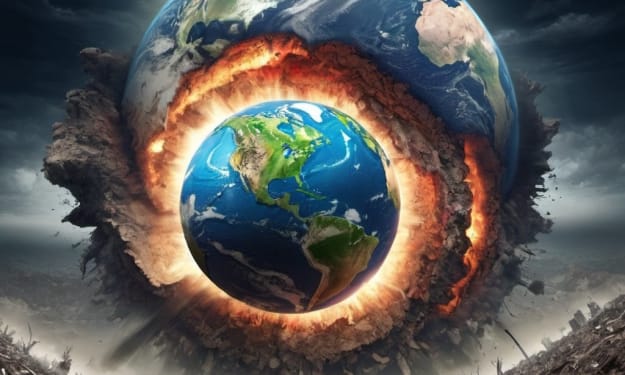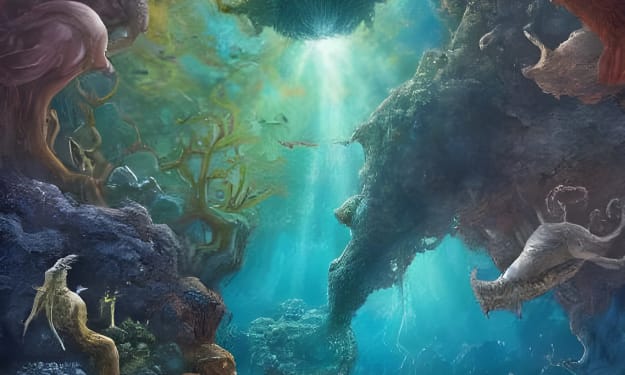Unraveling the Mysteries of Earth's Mysterious Satellite: The Moon
Moon

It's a dark night, almost 2 a.m., and you step outside to gaze at the sky. To your delight, a bright full moon illuminates the darkness. While the moon is a familiar sight, have you ever pondered how it came to be? The formation of Earth's natural satellite remains a captivating mystery, and various theories attempt to shed light on its origin.
One prevalent theory is the Giant Impact Theory, suggesting that the moon formed during a colossal collision between Earth and another planet approximately 4.5 billion years ago. This hypothetical planet, thought to be the size of Mars, collided with Earth, leading to the creation of the moon. Another theory proposes that the moon was once an asteroid or a wandering celestial body captured by Earth's gravity, emphasizing the isotopic and chemical similarities between Earth and the moon.
Yet another theory suggests that the moon emerged from Earth itself. It postulates that during a time when Earth spun rapidly, some of its material broke away and eventually formed the moon. However, discrepancies in the types and proportions of minerals challenge this theory.
An alternative perspective suggests that the moon could have accompanied Earth during its formation, making it a part of our planetary system from the beginning. Despite these intriguing theories, the question of whether the moon is merely Earth's satellite or a twin planet remains a topic of debate among astronomers.
To address this, we must turn to the definitions provided by the International Astronomical Union. According to their criteria, a planet is a celestial body that orbits the sun, has a nearly round shape due to gravity, and has cleared its orbit of other debris. In contrast, a satellite is an object in space that orbits a larger celestial body. Applying these definitions, the moon qualifies as Earth's satellite rather than a twin planet.
Delving into the past, approximately 3 to 4 billion years ago, the moon, despite not being a planet, likely possessed a fully-fledged atmosphere. Intense volcanic eruptions covered the lunar surface with basalt basins, propelled by powerful plumes of magma. Samples brought back from the moon revealed not only carbon monoxide and sulfur but also the building blocks of water, indicating the existence of a thick atmosphere that dissipated over time.
Interestingly, during the period when the moon had an atmosphere, it was much closer to Earth, appearing up to 19 times larger in the sky than it does today. However, the atmosphere eventually dissipated into space, leaving the moon vulnerable to meteorite impacts. Consequently, the moon's surface is adorned with countless craters, several million of which are larger than 12 meters across.
While the moon appears bright in the night sky, its surface is, in fact, darker than expected. The moon's reflectance is only slightly higher than that of asphalt, giving it a dark appearance. Despite its seemingly tranquil nature, the moon's history is filled with significant events, including human exploration.
The Apollo 11 mission in 1969 marked the first human landing on the moon, with astronauts spending over three years preparing for the historic journey. Exploring the Sea of Tranquility, they left behind various objects, including golf balls, an Andy Warhol drawing, and a message from Queen Elizabeth II. Since then, 12 humans have visited the moon, leaving their footprints and artifacts.
While the moon has become a familiar presence in our night sky, there is much we still don't know about this celestial companion. Synchronous rotation keeps the moon's far side hidden from us, and its orbit is gradually expanding, moving away from Earth by 1.5 inches each year. This interaction between Earth and the moon manifests in phenomena like moonquakes, lasting longer than earthquakes.
Beyond Earth, the moon has a unique time zone known as Lunar Standard Time, with a lunar year consisting of 12 days named after astronauts who walked on the moon. Despite its proximity, the moon's extreme temperatures range from 200°F near the equator to -400°F at the poles.
Moon-related myths have persisted throughout history, associating full moons with various phenomena, including changes in human behavior. However, scientific studies debunk many of these myths, revealing a lack of substantial evidence supporting lunar influence on humans.
As we continue to unravel the mysteries of our celestial neighbor, we find that the moon has intriguing characteristics, from its unusual flashes of light (Transient Lunar Phenomena) to the presence of cryovolcanoes on distant moons like Europa and Titan. Moreover, the moon's connection to Earth extends beyond its gravitational impact on tides, with curious correlations such as increased visits to vet emergency rooms for dogs during full moons.
In conclusion, the moon, with its captivating history and enigmatic features, continues to capture our imagination. From its mysterious origin to its role in shaping Earth's history, the moon stands as a testament to the wonders of our cosmic neighborhood. As we gaze at its radiant glow in the night sky, let us appreciate the celestial dance between Earth and its fascinating satellite.
Word Count: 945
It's a dark night, almost 2 a.m., and you step outside to gaze at the sky. To your delight, a bright full moon illuminates the darkness. While the moon is a familiar sight, have you ever pondered how it came to be? The formation of Earth's natural satellite remains a captivating mystery, and various theories attempt to shed light on its origin.
One prevalent theory is the Giant Impact Theory, suggesting that the moon formed during a colossal collision between Earth and another planet approximately 4.5 billion years ago. This hypothetical planet, thought to be the size of Mars, collided with Earth, leading to the creation of the moon. Another theory proposes that the moon was once an asteroid or a wandering celestial body captured by Earth's gravity, emphasizing the isotopic and chemical similarities between Earth and the moon.
Yet another theory suggests that the moon emerged from Earth itself. It postulates that during a time when Earth spun rapidly, some of its material broke away and eventually formed the moon. However, discrepancies in the types and proportions of minerals challenge this theory.
An alternative perspective suggests that the moon could have accompanied Earth during its formation, making it a part of our planetary system from the beginning. Despite these intriguing theories, the question of whether the moon is merely Earth's satellite or a twin planet remains a topic of debate among astronomers.
To address this, we must turn to the definitions provided by the International Astronomical Union. According to their criteria, a planet is a celestial body that orbits the sun, has a nearly round shape due to gravity, and has cleared its orbit of other debris. In contrast, a satellite is an object in space that orbits a larger celestial body. Applying these definitions, the moon qualifies as Earth's satellite rather than a twin planet.
Delving into the past, approximately 3 to 4 billion years ago, the moon, despite not being a planet, likely possessed a fully-fledged atmosphere. Intense volcanic eruptions covered the lunar surface with basalt basins, propelled by powerful plumes of magma. Samples brought back from the moon revealed not only carbon monoxide and sulfur but also the building blocks of water, indicating the existence of a thick atmosphere that dissipated over time.
Interestingly, during the period when the moon had an atmosphere, it was much closer to Earth, appearing up to 19 times larger in the sky than it does today. However, the atmosphere eventually dissipated into space, leaving the moon vulnerable to meteorite impacts. Consequently, the moon's surface is adorned with countless craters, several million of which are larger than 12 meters across.
While the moon appears bright in the night sky, its surface is, in fact, darker than expected. The moon's reflectance is only slightly higher than that of asphalt, giving it a dark appearance. Despite its seemingly tranquil nature, the moon's history is filled with significant events, including human exploration.
The Apollo 11 mission in 1969 marked the first human landing on the moon, with astronauts spending over three years preparing for the historic journey. Exploring the Sea of Tranquility, they left behind various objects, including golf balls, an Andy Warhol drawing, and a message from Queen Elizabeth II. Since then, 12 humans have visited the moon, leaving their footprints and artifacts.
While the moon has become a familiar presence in our night sky, there is much we still don't know about this celestial companion. Synchronous rotation keeps the moon's far side hidden from us, and its orbit is gradually expanding, moving away from Earth by 1.5 inches each year. This interaction between Earth and the moon manifests in phenomena like moonquakes, lasting longer than earthquakes.
Beyond Earth, the moon has a unique time zone known as Lunar Standard Time, with a lunar year consisting of 12 days named after astronauts who walked on the moon. Despite its proximity, the moon's extreme temperatures range from 200°F near the equator to -400°F at the poles.
Moon-related myths have persisted throughout history, associating full moons with various phenomena, including changes in human behavior. However, scientific studies debunk many of these myths, revealing a lack of substantial evidence supporting lunar influence on humans.
As we continue to unravel the mysteries of our celestial neighbor, we find that the moon has intriguing characteristics, from its unusual flashes of light (Transient Lunar Phenomena) to the presence of cryovolcanoes on distant moons like Europa and Titan. Moreover, the moon's connection to Earth extends beyond its gravitational impact on tides, with curious correlations such as increased visits to vet emergency rooms for dogs during full moons.
In conclusion, the moon, with its captivating history and enigmatic features, continues to capture our imagination. From its mysterious origin to its role in shaping Earth's history, the moon stands as a testament to the wonders of our cosmic neighborhood. As we gaze at its radiant glow in the night sky, let us appreciate the celestial dance between Earth and its fascinating satellite.





Comments
There are no comments for this story
Be the first to respond and start the conversation.